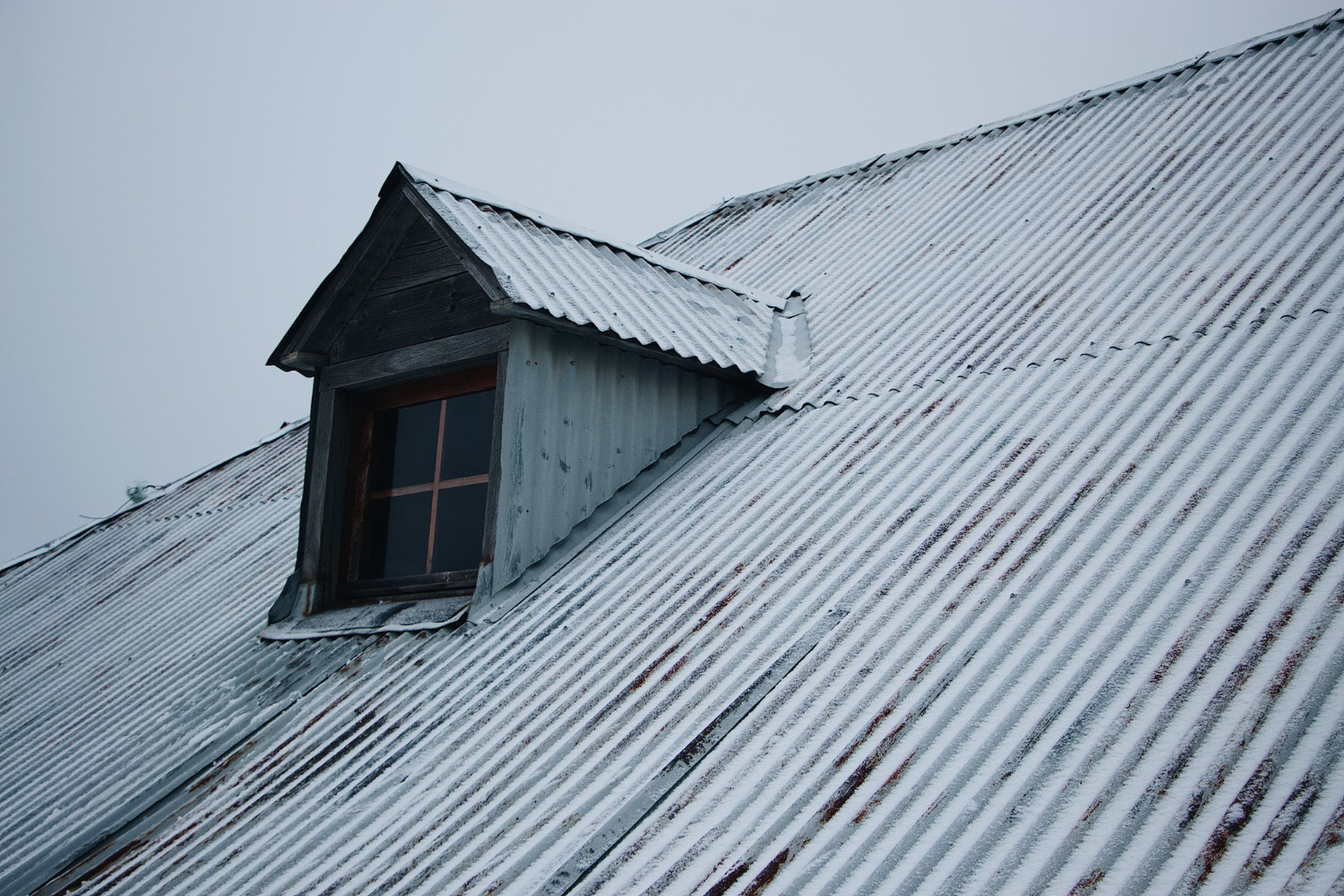How San Antonio’s Climate Affects Home Inspection Findings?
When it comes to understanding a property’s true condition, location and climate play a much larger role than most homeowners...

When it comes to understanding a property’s true condition, location and climate play a much larger role than most homeowners realize. This is especially true in a region like San Antonio, where intense heat, humidity, and seasonal rain can all influence the way homes age and perform over time. That’s why San Antonio home inspections often reveal specific patterns of wear and damage that are directly linked to the city’s unique weather conditions.
From cracked foundations caused by soil expansion to roof damage from strong summer storms, San Antonio’s climate affects nearly every component of a home. Understanding these effects can help homeowners, buyers, and sellers prepare for what to expect during an inspection — and more importantly, how to maintain their property year-round.
Why Climate Matters in Home Inspections
Every home inspection is influenced by the surrounding environment. Climate determines how materials expand, contract, or deteriorate, and how moisture and temperature interact with a property’s structure. In San Antonio, inspectors often encounter issues that are rare in other parts of the country because of the city’s distinct weather patterns.
The key climatic factors that influence home inspection findings in San Antonio include:
- High heat and UV exposure
- Seasonal humidity and moisture accumulation
- Occasional freezing temperatures in winter
- Expansive clay soils common to the region
- Sudden and heavy rainfalls
These conditions can lead to very specific and sometimes subtle problems that inspectors know to look for — problems that, if overlooked, can cause long-term damage.
1. Foundation Issues and Expansive Clay Soil
One of the most common findings in San Antonio home inspections relates to foundation movement. The city’s natural soil composition plays a huge part in this. Much of the area is built on expansive clay soil, which has a tendency to swell when wet and shrink when dry. These constant cycles of expansion and contraction put immense stress on a home’s foundation.
Common Inspection Findings:
- Cracks in walls, ceilings, or floors
- Uneven or sloping floors
- Doors and windows that stick or don’t close properly
- Separation between bricks or siding
Implications:
Foundation movement doesn’t always mean immediate structural failure, but it can indicate ongoing soil instability beneath the home. Inspectors often recommend monitoring cracks and grading around the property to ensure proper drainage. Over time, unaddressed soil shifts can cause significant structural repairs.
Pro Tip:
Proper moisture management around the foundation — such as maintaining consistent watering during dry months — can minimize soil movement and reduce stress on the slab.
2. Roofing Wear and Sun Damage
San Antonio’s long, hot summers take a toll on roofing materials. Prolonged UV exposure causes asphalt shingles to become brittle, curl, or lose their protective granules. Combined with high heat and occasional hail, roofing deterioration is a common sight during inspections.
Common Inspection Findings:
- Discolored, cracked, or missing shingles
- Signs of granule loss or blistering
- Damaged flashing or vent seals
- Early signs of roof leaks or water stains in the attic
Implications:
Even minor roof damage can allow water intrusion, leading to mold growth and ceiling stains. Inspectors often note that older roofs in San Antonio may age faster than expected due to the intense sun exposure — meaning they might need replacement sooner than similar roofs in cooler climates.
Preventive Measures:
Regular roof inspections and maintenance can help identify wear early. Using light-colored or reflective roofing materials can also reduce UV-related damage and keep attic spaces cooler.
3. Moisture and Humidity Problems
While San Antonio is known for its heat, it also experiences periods of high humidity and heavy rainfall, especially in late spring and early fall. This combination of warmth and moisture creates ideal conditions for mold growth and indoor air quality issues.
Common Inspection Findings:
- Mold or mildew in bathrooms, attics, or crawl spaces
- Condensation around windows and air vents
- Water stains on ceilings or walls
- Poor ventilation in kitchens and laundry areas
Implications:
Excess moisture can weaken building materials, attract pests, and cause wood rot. Mold, in particular, can pose health concerns and may require professional remediation if discovered. Inspectors frequently emphasize the importance of ventilation and dehumidification to maintain healthy air quality indoors.
Prevention Tips:
- Use exhaust fans in high-moisture areas
- Check for roof and plumbing leaks regularly
- Keep gutters clean to prevent water pooling near the home’s base
- Consider dehumidifiers during humid seasons
4. HVAC System Wear from Extreme Heat
In San Antonio, air conditioning systems work overtime for much of the year. The strain from constant use can shorten the lifespan of HVAC components, especially if the system isn’t properly maintained. Home inspectors often find issues related to efficiency, airflow, and duct cleanliness.
Common Inspection Findings:
- Dirty or clogged filters
- Refrigerant leaks
- Inconsistent cooling across rooms
- Damaged or poorly insulated ductwork
Implications:
An overworked HVAC system not only raises energy bills but also affects indoor comfort and air quality. When inspectors identify these issues, they usually recommend servicing the system and improving insulation to reduce thermal strain.
Maintenance Advice:
Replace filters every one to three months and schedule annual HVAC check-ups. Keeping outdoor condenser units free from debris also improves performance and longevity.
5. Water Intrusion and Drainage Concerns
With San Antonio’s occasional downpours, proper drainage is essential to prevent flooding and foundation erosion. Many inspection reports highlight drainage-related issues, especially in older neighborhoods where grading has shifted over time.
Common Inspection Findings:
- Standing water near the foundation after rain
- Clogged or damaged gutters and downspouts
- Erosion near sidewalks or patios
- Water stains in basements or crawl spaces
Implications:
Improper drainage can lead to soil shifting, foundation cracks, and mold growth. Over time, it can even cause structural settlement. Inspectors often recommend re-grading the landscape or extending downspouts to divert water away from the home.
Prevention Strategies:
- Maintain gutters and ensure downspouts discharge at least 5–10 feet from the house
- Install French drains or sump pumps in problem areas
- Regularly check for signs of erosion around the yard
6. Termite and Pest Activity
Warm weather and high humidity create ideal conditions for pests, particularly termites. In San Antonio, termite activity is a frequent concern and a standard part of any thorough home inspection.
Common Inspection Findings:
- Mud tubes along the foundation or walls
- Soft or hollow-sounding wood
- Discarded wings near windows or doors
- Minor structural damage in wooden framing
Implications:
Termites can go undetected for years, silently eating away at wood structures. Left unchecked, this can lead to costly repairs and even compromise the safety of the building. Inspectors may suggest further evaluation by pest control professionals if signs of activity are found.
7. Plumbing System Concerns
San Antonio’s weather fluctuations — especially the occasional freeze — can also impact plumbing systems. Older homes may still have galvanized steel or cast iron pipes, which are more prone to corrosion.
Common Inspection Findings:
- Leaks under sinks or behind walls
- Slow drainage due to mineral buildup
- Signs of corrosion or discoloration
- Improperly insulated outdoor plumbing
Implications:
Pipe damage can lead to leaks that feed into the home’s foundation or walls, causing both structural and water-quality issues. Inspectors often emphasize the importance of insulation and regular plumbing maintenance to avoid costly repairs during cold snaps.
8. Attic and Insulation Issues
San Antonio’s high heat places unique demands on insulation and attic ventilation. Inspectors often find insufficient or deteriorated insulation that can make cooling systems work harder and increase energy consumption.
Common Inspection Findings:
- Uneven or compressed insulation
- Poor attic ventilation
- Signs of condensation or mold in attic rafters
- High indoor temperatures even when A/C is running
Implications:
Inadequate insulation can lead to energy loss and uneven temperature distribution throughout the home. Proper attic ventilation also helps prevent moisture accumulation and roof deterioration.
Recommendations:
- Upgrade insulation to appropriate R-values for the region
- Ensure attic vents are unobstructed
- Install ridge vents or fans if heat buildup is excessive
Understanding the Implications of Climate-Related Findings
When climate-related issues show up in a home inspection, they don’t always signal a major problem. However, they do offer valuable insight into the property’s maintenance history and future needs. For example:
- Foundation cracks often point to inconsistent soil moisture levels rather than immediate structural danger.
- Roof wear may simply indicate natural aging under UV exposure.
- Mold or humidity findings are reminders to improve ventilation and waterproofing.
Understanding these nuances allows homeowners to take preventive action and avoid escalating damage. Buyers can also use inspection findings to plan for upcoming maintenance or negotiate repairs before purchase.
Preparing Your Home for Climate Challenges
San Antonio homeowners can minimize weather-related damage with a few proactive steps:
- Maintain consistent moisture around foundations — especially during dry spells.
- Schedule roof and HVAC inspections annually before extreme weather seasons.
- Monitor indoor humidity and use dehumidifiers when needed.
- Improve drainage with proper grading and clean gutters.
- Check insulation and attic ventilation to reduce heat stress.
Preventive maintenance not only improves inspection results but also enhances long-term property value and livability.
The Bottom Line
San Antonio’s unique climate — with its heat, humidity, and clay soils — plays a powerful role in how homes age and perform. From foundation cracks and roofing wear to mold and HVAC strain, many inspection findings are directly tied to environmental conditions.
By understanding these common patterns revealed in San Antonio home inspections, homeowners can take a proactive approach to maintenance, preventing minor weather-related issues from becoming costly repairs.
In the end, the goal isn’t just to pass an inspection — it’s to understand how your home interacts with the climate and how to protect it for years to come. Also visit:
A Comprehensive Guide to Navigating the Home Inspection Process




